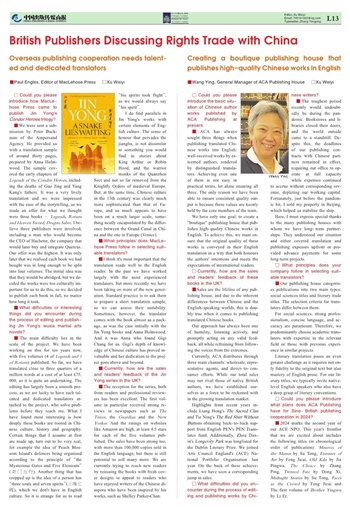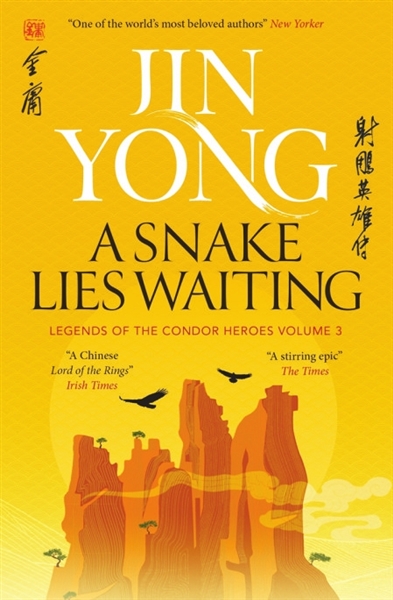■Paul Engles, Editor of MacLehose Press □Xu Weiyi
□Could you please introduce how MacLehose Press came to publish Jin Yong's Condor Heroes trilogy?
■We were sent a submission by Peter Buckman of the Ampersand Agency. He provided us with a translation sample of around thirty pages, prepared by Anna Holmwood. The sample covered the early chapters of Legends of the Condor Heroes, including the deaths of Guo Jing and Yang Kang's fathers. It was a very lively translation and we were impressed with the ease of the storytelling, so we made an offer for what we thought were three books – Legends, Return and Heaven Sword, Dragon Sabre. I believe three publishers were involved, including a man who would become the CEO of Hachette, the company that would later buy and integrate Quercus. Our offer was the highest. It was only later that we realised each book we had bought was in long enough to be split into four volumes. The initial idea was that they would be abridged, but we decided the works were too culturally important for us to do this, so we decided to publish each book in full, no matter how long it took.
□What difficulties or interesting things did you encounter during the process of editing and publishing Jin Yong's wuxia martial arts novels?
■The main difficulty lies in the scale of the project. We have been working on this for ten years now, with five volumes (4 of Legends and 1 of Return) published. So far, we have translated close to three quarters of a million words at a cost of at least £75,000, so it is quite an undertaking. The editing has largely been a smooth process, as we are lucky to have such talented and dedicated translators attached to the project, who solve problems before they reach me. What I have found most interesting is how deeply these books are rooted in Chinese culture, history and geography. Certain things that I assume at first are made up, turn out to be very real, for example the idea of Peach Blossom Island's defences being organised according to the principle of “the Mysterious Gates and Five Elements”(奇门五行). Another thing that has cropped up is the idea of a person has “three souls and seven spirits”(三魂七魄), which we don't have in English culture. So it is strange for us to read “his spirits took flight”, as we would always say “his spirit”.
I do find parallels in Jin Yong's works with certain elements of English culture. The sense of honour that pervades the jianghu, is not dissimilar to something you would find in stories about King Arthur or Robin Hood, and the warrior monks of the Quanzhen Sect and not so far removed from the Knightly Orders of medieval Europe. But, at the same time, Chinese culture in the 13th century was clearly much more sophisticated than that of Europe, and so much appears to have been on a much larger scale, something neatly encapsulated by the difference between the Grand Canal in China and the one in Europe (Venice).
□What principles does MacLehose Press follow in selecting suitable translators?
■I think it's most important that the translation reads well to the English reader. In the past we have worked largely with the most experienced translators, but more recently we have been taking on more of the new generation. Standard practice is to ask them to prepare a short translation sample, so we can assess their suitability. Sometimes, however, the translator comes with the book almost as a package, as was the case initially with the Jin Yong books and Anna Holmwood. And it was Anna who found Gigi Chang for us. Gigi's depth of knowledge of Chinese culture has proved invaluable and her dedication to the project goes above and beyond.
□Currently, how are the sales and readers' feedback of the Jin Yong series in the UK?
■The reception for the series, both from readers and professional reviewers has been excellent. The first volume in particular received strong reviews in newspapers such as The Times, the Guardian and the New Yorker. And the ratings on websites like Amazon are high, at least 4.5 stars for each of the five volumes published. The sales have been strong too, with more than 100,000 copies sold in the English language, but there is still potential to sell many more. We are currently trying to reach new readers by reissuing the books with fresh cover designs to appeal to readers who have enjoyed writers of the Chinese diaspora who have been inspired by his works, such as Shelley Parker-Chan.



